SUMMARY
This is AI generated summarization, which may have errors. For context, always refer to the full article.
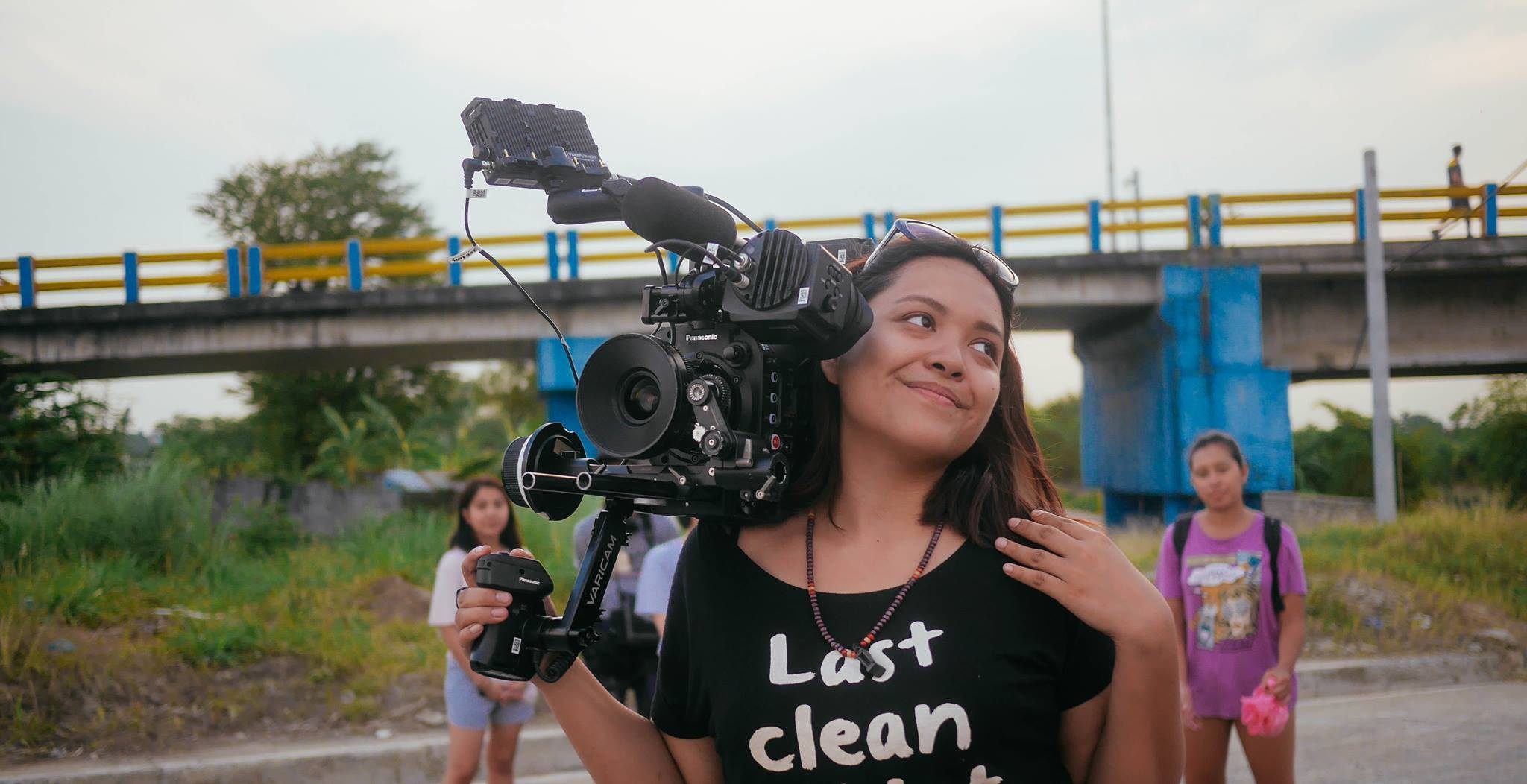
DAGUPAN CITY, Philippines — When Martika Ramirez Escobar found out her film was going to be part of Sundance, she was on the way to a lock-in shoot for Quark Henares’ new film.
“Yung initial reaction ko was: Ano ‘to, wrong send? Rejection letter? Joke ba ‘to?”
(My initial reaction was: What’s this? Was it missent? A rejection letter? Is this a joke?)
To her, it seemed like a statistical impossibility. As the largest independent film festival in the United States, Sundance was home to many critically acclaimed films such as Joanna Hogg’s The Souvenir, Lee Isaac Chung’s Minari, and Sian Heder’s CODA. After applying on a whim via FilmFreeway in early August 2021, Escobar tabled the idea of getting in, thinking she didn’t stand a chance against 14,000 applicants. But when she opened the email, it contained only good news.
“Ang feeling ko talaga the entire day was confused (I really felt confused the whole day)…. Now, I’m over the confusion. I’m at the point where I’m just overwhelmingly thankful and grateful sa pagkaswerte (for my luck).”
Those familiar with Escobar’s work wouldn’t be as surprised with her acceptance, nor would they attribute it to sheer luck. Even before Leonor Will Never Die, Escobar has established herself as a beloved filmmaker and cinematographer in the country: lending her artistic eye to music videos by Zach Tabudlo (“Heart Can’t Lose”) and The Juans (“Sabik”), as well as films by Dwein Baltazar (Hello Stranger: The Movie) and Kaj Palanca (Henry). But beyond this, she was known for her absurd concepts and playfulness with form in her short films such as Pusong Bato and Living Things.
Her highly anticipated debut feature Leonor Will Never Die follows Leonor Reyes (Sheila Francisco), a retired filmmaker, who suddenly finds herself as the hero of her own unfinished screenplay after a near-death experience. The film is the first Filipino feature to compete in the World Cinema Dramatic Competition of the festival since Auraeus Solito’s Ang Pagdadalaga ni Maximo Oliveros in 2006. Leonor Will Never Die was recently picked up by the sales company Cercamon — known for handling Kamila Andini’s Yuni and Aleksandre Koberidze’s What Do We See When We Look At The Sky?
Last week, I sat down with Escobar over Zoom on a hot afternoon, 200 kilometers apart, both of us seemingly sick to talk about falling in love with cinema, how a rock helped her break into the scene, and the eight-year journey towards creating her debut feature.

A childhood obsession
Known to her friends and family as Marty, Escobar grew up around people with a deep appreciation for the arts: her grandmother loved to paint and sew garments whereas her mother used a handheld camera to document her childhood (“I’m an only child”). This fascination rubbed off on her and she was soon on the other side of the lens, taking photos and videos of everything from family events and school functions to her toys and pets. “At some point, feeling ko obsession ko siya (I think it became my obsession),” admits Escobar, laughing. “I feel like it’s because with a camera, you can press pause, play, and record so many things that happen in real life. Especially the moments you feel are special. It feels like magic.”
This fascination brought her to the BA Film program at the University of the Philippines Diliman, where she would become a cinematographer for short films such as Sari Estrada’s Asan Si Lolo Mê? and Petersen Vargas’ 5:00 ning gatpanapun before she finished her degree. She graduated with honors and her thesis short film Pusong Bato won both the Best Thesis award in her college and the Best Short Film award at the 11th Cinemalaya Independent Film Festival, later competing in multiple festivals around the world including the 19th Busan Film Festival.
Pusong Bato centers on Cinta Dela Cruz, a faded actress who desperately tries to relive her moments of stardom in the 1970s until an earthquake introduces a heart-shaped rock that she eventually falls in love with. The film combines many elements that define Escobar’s later work: the use of meta-narratives, the period recreations and interrogations of Filipino genre films, unapologetic objectophilia, generous amounts of magic realism, and the dialogue between cinema and its audiences across multiple timelines. In a way, Pusong Bato can be seen as a spiritual prologue to Leonor Will Never Die.
When asked why she creates films centered around the filmmaking process, Escobar has an immediate answer. “Growing up, pag nanonood ako ng pelikula, doon ko mas naiintindihan kung paano ang mga tao at ang mundo.”
(When I’d watch films growing up, that’s where I’d understand people and the world the most.)
She recalls how it seemed normal to her six-year old self to see celebrities become politicians, only later questioning these absurd realities in adulthood. “Kaya pag gumagawa ako ng films (So when I make films), it’s usually about filmmaking itself because I like exploring what about filmmaking makes it special. Bakit tayo na-a-affect this way? Paano tayo napapaniwala na ang isang action star ay pwedeng maging president? Bakit yung fashion natin katulad nung mga napanood natin TV?”
(Why do we get affected this way? How do we end up believing that an action star can become president? Why is our fashion sense similar to what we see on TV?)
This perspective on cinema has only grown and refined with each short film that she has created. In Dindo, the son of a film editor speaks to the characters onscreen to find a missing segment of his father’s film, enabling him to find closure; in Living Things, a woman finds her decade-long lover turned into a cardboard standee, encouraging her to transform along with him to preserve their relationship; in Don’t worry, we still hear you, film negatives are presented as seeds that, when replanted, bloom into more reels.
The birth of ‘Leonor’

The idea for her feature arrived during Escobar’s days in Mowelfund. “A friend and I asked ourselves: ‘Sa dami ng action films, bakit walang pelikula tungkol sa action lola (Among all these action films, why isn’t there one with an action grandma)?’”
Escobar continued to work on the idea alone, eventually writing the core of the film: a grandmother who gets transported into a film she’s writing before she dies. Escobar tried to submit the film to local grant-giving bodies for years, only to be rejected. “When I write, nagsisimula siya sa images, not with words. Parang, dahil lang requirement ang script, kaya ako nagsusulat. Pero kung hindi, pwede akong gumawa ng script with just images.”
(When I write, it begins with images, not with words. It’s like, I only write because the script is a requirement. If writing weren’t a requirement, I could do a script with just images.)
To trim away unnecessary elements and get to the core of the narrative, she joined several workshops under Ricky Lee and Bing Lao to strengthen her screenplay. Despite the five years dedicated solely to the rewriting and the innumerable drafts, Escobar describes the experience as joyful. “Hindi lang ako natututo about scriptwriting. Nakakahanap rin ako ng bagong friends, possible na mga kakampi.”
(I didn’t just learn about scriptwriting. I also found new friends, possible allies.)
It was during this time when the producing duo Mario Cornejo (Apocalypse Child) and Monster Jimenez (Respeto) of Arkeofilms came onboard. Escobar was part of the freelance brainstorming team of the company when another producer recommended the two look at her script. They attached themselves soon after and their involvement subsequently allowed the film to be developed by multiple labs such as Talents Tokyo Next Masters Program, Ties that Bind, Full Circle Lab Philippines, and South Asian Film Lab, with support later pouring in from Purin Pictures and the Film Development Council of the Philippines, among others.
The pre-production process involved detailed storyboards that were conceptualized since she was in her youth and detailed shot lists and scripts. The team assembled by Escobar was composed of kakampis (allies) — filmmakers and creatives who were of similar wavelengths and who were supportive of her and her vision. The principal photography began in the latter half of 2019 and took a total 17 shooting days spanning over two months, excluding the days wherein Escobar would film small sequences in her own home.
The film itself has many cameos from people within the filmmaking community such as John Torres, Sheron Dayoc, Victor Villanueva, Kristine Kintana, Chad Cabigon, Kip Oebanda, and Alemberg Ang. “Nung nangailangan ako ng extras, sila yung willing pumunta (When I needed extras, they were the ones who willingly came). No questions asked,” says Escobar, saying there were more set visitors from the film industry that didn’t make it into the final cut. “Ikinatutuwa ko rin yun kasi sila yung mga kasabayan kong nag-e-enjoy lang gumawa ng films nung college kami (It also makes me happy that they’re the people I used to enjoy making films with back in college). Now that we’re older, we support each other.”
An end to the forever film

The post-production process took an additional two years, particularly due to the pressure of arriving at a satisfying culmination to eight years of work. The initial conclusion written in the script incorporated an aspect of film restoration. “I wanted to play with this notion that films are only restored if they’re important and therefore Leonor’s film was important.” But when the production was unable to shoot at a restoration lab, they had to find an alternative. “Ang nature ng film na ito is that it is a ‘forever film’ (This film’s nature is that it will be a ‘forever film’): it will keep changing through the years.”
Escobar recalls a conversation she had with editor Lawrence S. Ang (Violator): “Ito na ata yung pinakamarami siyang versions and exports,” says Escobar. “Pero never kong naramdaman na gusto niya akong iwan sa process.”
(This one probably has the most versions and exports. But I never felt like he wanted to leave me during the process.)
The ending in the final cut of the film was solidified after two incidents: the first was when she saw Ang piecing the film together on his computer. “Ewan ko kung bakit pero pag nakakakita ako ng editing timeline, it looks like a human timeline (I don’t know why, but whenever I see an editing timeline, it looks like a human timeline),” says Escobar, a realization that sent her into an existential crisis. “Minsan natatakot ako kasi (I get scared sometimes because) it feels so measurable. Ang daling baguhin. Ito na ba yun? (It’s so easy to change it. Is this it?) Eight years of work? In this tiny screen with someone controlling it? There’s something about seeing life as one big film na patuloy lang nating sinusulat at nire-revise (that we just keep on writing and revising) until it ends.”
The second was when her grandfather passed away. It was during the latter part of the post-production process. “If there are only a few important people in my life, isa siya doon (he’d be one of them).” “Yung very first thought ko was: ‘Is this it? Eto na ba yun?’ Ang awkward, ang random, ang absurd. Akala ko nung malalaman ko yun, magiging kamukha ko yung mga nasa melodrama films. Pero nung nangyari siya, it felt very natural. Kaya ganoon rin sa film.”
(My very first thought was: ‘Is this it?’ It was awkward, random, absurd. I thought that when I’d realize he’d died, I’d end up looking like those people in melodramas. But when it finally happened, it felt very natural. It’s the same thing with the film.)
Escobar admits that despite the film’s flourishes and absurdities, it is extremely personal work at its core. “Whatever narratives exist between them is based on people who I hold close to me.” Her grandfather appears in the film’s acknowledgements.
When the film was accepted into Sundance, Escobar opted to change the original title: Ang Pagbabalik ng Kwago (Return of the Owl). “The producers felt like the original title had an old, B-movie action film feel but I just felt like I needed to change it.” She admits that the former title, much like the film itself, was from a younger version of herself. “It’s not about a woman in an ‘80s action film. It’s about a woman dealing with her existential crisis, and I think Leonor Will Never Die is much more sound in terms of mood, intention, and tone. Kasi sa pelikula, hindi ka naman talaga mamamatay (Because in films, you don’t really die).”
Outgrowing perspectives
In the last two years, Escobar found herself changing as a filmmaker: veering away from film school rigidity and embracing the spontaneity of shoots and improvised filmmaking. These freedoms have lent a documentary feel to her most recent shorts. Escobar admits that Leonor Will Never Die represents a former self that she’s since outgrown. “Kabataan ko na yung film and may mga times na I hate it as an older and wiser person kasi feeling ko yung ideas and ambitions ko for it, hindi na ganoon ang tingin ko. Kaya rin siguro ang tagal bago ko nahanap yung ending. It’s a growing film.”
(The film was from my childhood, and there are times that I hate it as an older and wiser person, because I feel like my ideas and ambitions for it are no longer what I believe in. That’s probably why I took so long to find its ending.)
The confusion early on in the process is now replaced by gratitude, though the anxiety looms. “Meron nga akong konting fear kasi baka kaya sobrang swerte ko kasi ito lang yung only film na gagawin ko ever. After nito, baka wala na akong chance.”
(I do have this tiny fear that I’m just really lucky, because this will be the only film I end up making, that after this, I won’t have any more chances.)
Escobar rattled off several exciting projects in development (including a few upcoming shorts she was seeking a home for), as well as a list of films she’d recommend to everyone (available via Letterboxd).
As we were ending our conversation, I brought up an interview she did for Scout Magazine in 2015. “The interviewer asked you: ‘If you could fall in love with any object, what would it be?’ You said: ‘A camera’. Would you make the same choice or would you choose differently?” She smiled: “A camera would be great, but I don’t want it to be something that I can just use. I’d want it to be a tree. I feel like it’ll understand me. I feel like it’s important to be alive.” – Rappler.com
Leonor Will Never Die will be premiering in the World Cinema Dramatic Competition at the 2022 Sundance Film Festival beginning January 21, 9:30 PM MST. For more information visit the Sundance website.
Add a comment
How does this make you feel?
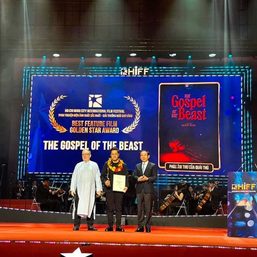
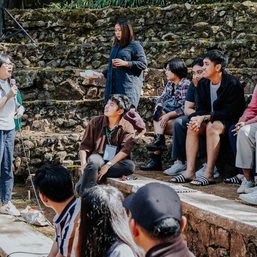
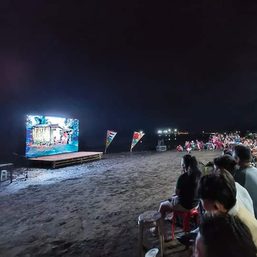
![[Only IN Hollywood] Eugene Domingo steals show at Manila International Film Festival](https://www.rappler.com/tachyon/2024/02/MIFF2024EugeneDomingoJokingkyAsksForAKissByDingdongDantesBeforeAnnouncingBestActorWinnerBySthanleeBMirador1.jpg?resize=257%2C257&crop=163px%2C0px%2C955px%2C955px)
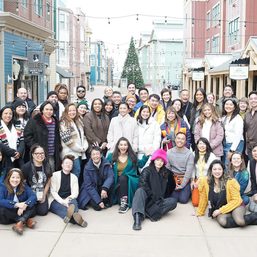
There are no comments yet. Add your comment to start the conversation.